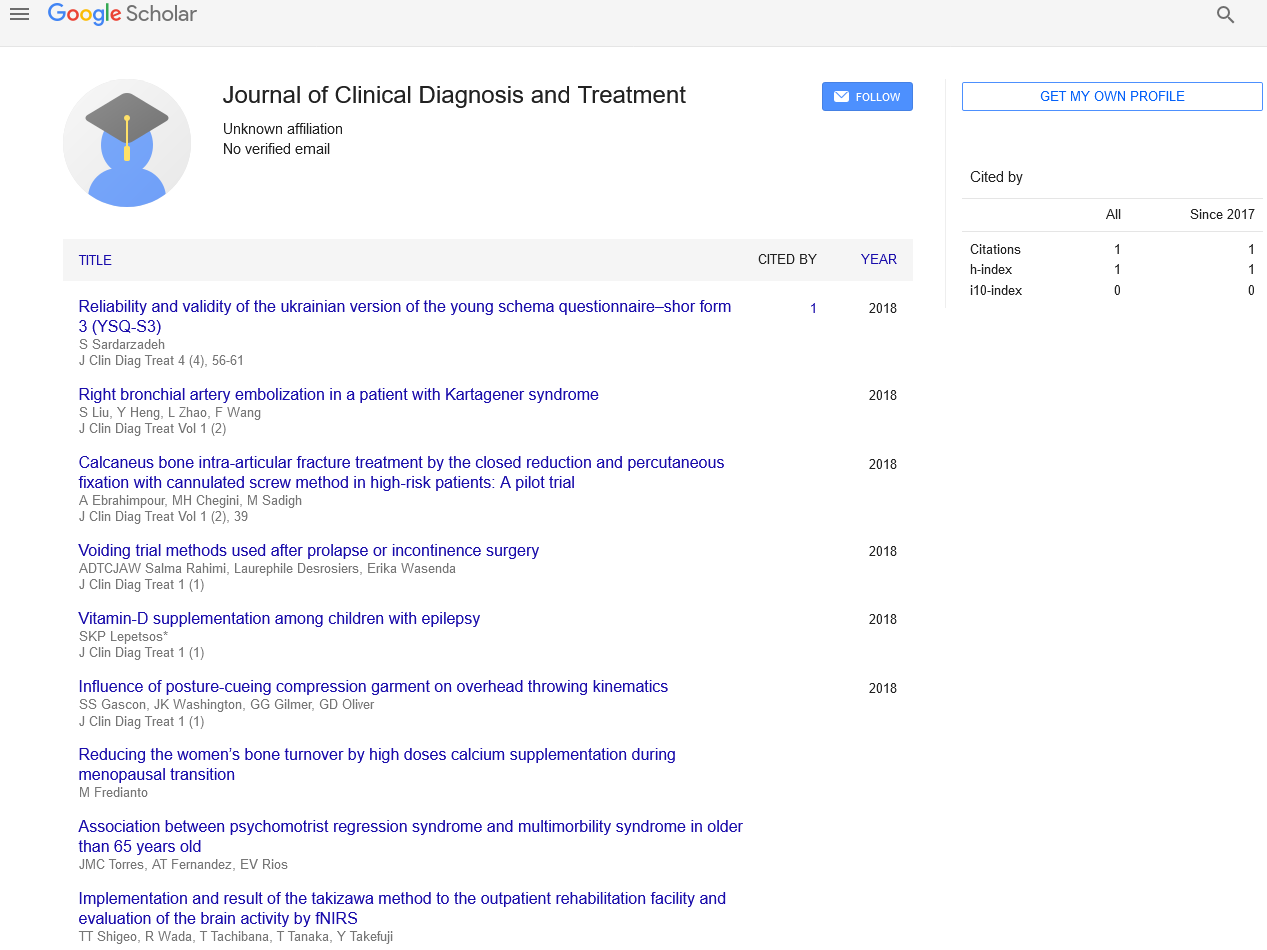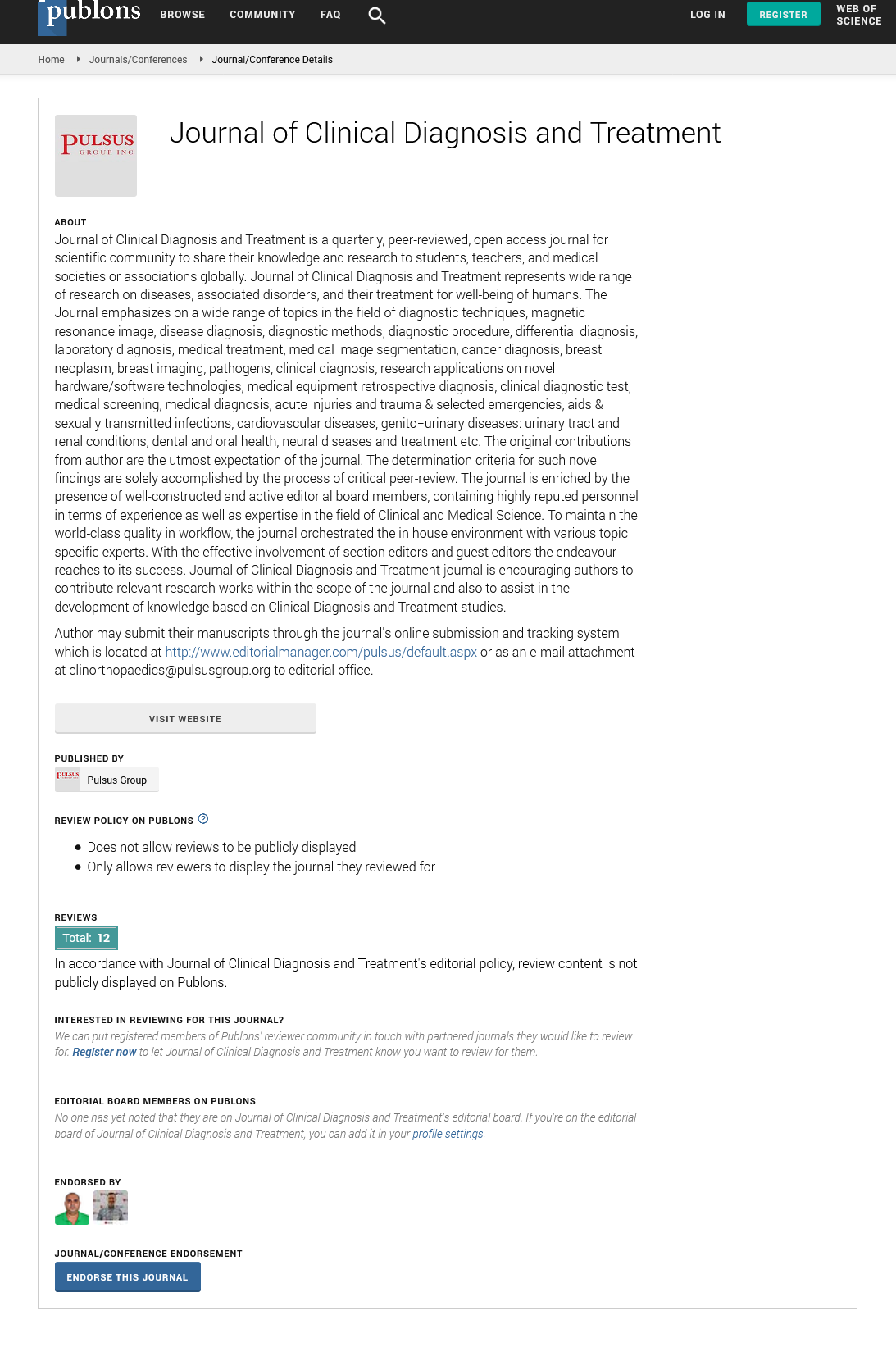Diagnosis of Cancer at Pioneer Phase
Received: 18-Feb-2022, Manuscript No. PULJCDT-22-4277; Editor assigned: 20-Feb-2022, Pre QC No. PULJCDT-22-4277(PQ); Reviewed: 28-Feb-2022 QC No. PULJCDT-22-4277(Q); Revised: 02-Mar-2022, Manuscript No. PULJCDT-22-4277(R); Published: 12-Mar-2022, DOI: 10.37532/puljcdt.22.4(2).07
This open-access article is distributed under the terms of the Creative Commons Attribution Non-Commercial License (CC BY-NC) (http://creativecommons.org/licenses/by-nc/4.0/), which permits reuse, distribution and reproduction of the article, provided that the original work is properly cited and the reuse is restricted to noncommercial purposes. For commercial reuse, contact reprints@pulsus.com
Abstract
Cancer kills around a quarter of the people in the developed countries. Even when there is a screening test for a specific disease, most malignancies present with symptoms to basic care. However, cancer signs might also be indicators of a benign disease, therefore the GP must determine whether cancer is a possibility. Until recently, very little research had been done on this mechanism. The process of primary care diagnosis, particularly the selection of patients for quick inquiry, is examined in this review paper. It focuses on the four most prevalent malignancies in the United Kingdom: breast, lung, colon, and prostate, as they have been the topic of the most recent research.
Introduction
Cancer will kill about a quarter of the people in the developed world. As other causes of mortality fade in relevance, this number is rising. The majority of cancer patients present with symptoms, and the majority of these visits are to primary care. 1 Although new cancer diagnoses are uncommon (a full-time UK GP will diagnose a new malignancy in one of his or her patients once a month), coping with the prospect of cancer is a daily event. As a result, GPs quickly gain expertise in diagnosing what isn't cancer and gradually gain expertise in diagnosing what is cancer. What irritates GPs is that they are evaluated almost completely on their diagnostic performance in patients who turn out to have cancer, while receiving little or no credit for those who do not.
A cancer diagnosis should have gotten easier in the last decade, in theory. Rapid investigation clinics, which provide professional investigation in two weeks, are well-established in the United Kingdom. National recommendations are used to guide patient selection, but they are usually disregarded. Primary care imaging has become more accessible, both in terms of availability and timeliness. Despite this, the UK's cancer death rate remains low when compared to other countries, and some believe that all of these new facilities have made little or no effect. According to current estimates, late diagnosis claims the lives of 7500–10,000 people in the United Kingdom each year. Almost all study has looked at the entire A–E range, with only a few studies focusing on where delays occur and where there is the most room for improvement. For the rest of this review, I'll focus on activity between B and D, that is, from initial presentation to referral for final inquiry, and I'll use the four most frequent cancers as examples: breast, prostate, lung, and colorectal cancer.
It is usually simple for the patient to pinpoint when their symptoms began and when they were first reported to primary care in retrospect. However, it may not be evident to the clinician at the time that the symptoms are indicative of a malignancy. There is evidence that patients may recognize which symptoms are important. Most symptoms that could indicate cancer are not reported to primary care because the patient believes there is a simple explanation for their ailment that does not require medical treatment, which is generally right. As a result, only 41% of individuals with rectal bleeding tell their doctor. Cancer risk is higher in those who have been selected in both of these selection processes (understandably – the selection process works, albeit imperfectly). Surprisingly, the relative increase in cancer risk from the first choice (deciding whether or not to consult) is bigger than the second choice (deciding whether or not to consult) (the GP deciding whether to refer). For example, a single episode of rectal bleeding in the community has a positive predictive value (or risk) of colorectal cancer of roughly 0.1 percent. The risk of cancer increases by 2–3 percent if the bleeding is reported to primary care. The risk is 5– 7% in patients referred to secondary care.
This risk gradient is crucial. The 'gatekeeper' function of primary care, in which GPs select patients for inquiry or referral, has sparked a lot of debate. The UK's low cancer performance is likely due to GPs setting an unrealistically high bar for selecting individuals for inquiry. Specialist clinics, on the other hand, are quick to criticize GPs for failing to follow referral guidance while also claiming that referral guidance has a poor ability to detect cancer. Because of this inconsistency, the GP is caught in the middle, combining patient expectations with the requirement to manage resources wisely. To aid in this balancing act, I will summarize recent developments in primary cancer diagnosis for the remainder of this review. Other malignancies have received little attention in primary care, owing to their rarity. As a result, referral decisions must be based on the GP's experience, as well as intuition, with intuition being the most critical factor. The limited trials that have been conducted mainly back up the existing clinical practice. Thus, the risk of oesophageal cancer with dysphagia is 5.7 percent in males and 2.4 percent in women, while the risk of urinary tract cancer with haematuria is 7.4 percent and 3.4 percent, respectively, indicating that further research is necessary. Similarly, general practitioners appear to be adept at determining which patients with enlarged cervical lymph nodes have cancer and which do not. In general, less than 2% of cervical lymphadenopathy seen in primary care is cancerous.






